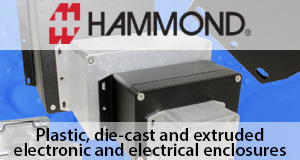The global automotive brake system market was valued at US$ 24.34 billion in 2024 and is projected to reach a market valuation of US$ 38.35 billion by 2033. This growth represents a CAGR of 5.85% during the forecast period from 2025 to 2033.

The automotive brake system market is experiencing significant growth due to increasing consumer demand for advanced vehicle safety features. As drivers worldwide become more aware of road hazards and the importance of safety, the adoption of Advanced Driver Assistance Systems (ADAS) has surged. In 2024, ADAS installations reached 334 million units, with projections indicating a leap to 655 million units by 2030.
Many new vehicle models in the automotive brake system market now embed smart features such as automatic braking and adaptive cruise control. Additionally, disc brakes continue to replace drum brakes because of their superior performance in challenging weather and better compatibility with modern systems. Notably, ZF’s electro-mechanical brake system, which removes traditional hydraulic components, exemplifies the industry’s push toward efficiency and sustainability.
Automotive Brake System Market Key Takeaways
- By Type, Disc brakes have secured over 60% of the automotive brake system market.
- By Component, Brake pads account for more than 25% of the automotive brake system market.
- By Actuation Type, Hydraulic brake systems dominate the automotive brake system market, controlling over 70% of the market share.
- In terms of technology, the Anti-Lock Braking System (ABS) holds a significant position, capturing over 30% of the automotive brake system market.
Regional Analysis
Dominance of the Asia Pacific Automotive Brake System Market
The automotive brake system market in the Asia Pacific region is at the forefront of global innovation, controlling over 45% of global sales. This remarkable dominance is attributed to rapid industrialization, urbanization, and a booming automotive sector that collectively drive demand for advanced braking solutions.
- Technological Advancements and Key Players: Technological advancements are a hallmark of the automotive brake system market in Asia Pacific. Major players, such as Bosch, Continental AG, and Aisin Seiki Co., Ltd., are investing heavily in research and development (R&D) to stay ahead of the competition. These investments focus on enhancing braking performance, safety features, and overall vehicle dynamics.
- Standardization of Advanced Safety Features: The adoption of electronic stability control (ESC) and anti-lock braking systems (ABS) is becoming standard across many vehicle models in the region. These technologies significantly improve vehicle safety by preventing wheel lock-up during sudden braking and enhancing overall stability, particularly in adverse driving conditions.
- Rise of Electric Vehicles and Specialized Components: The rapid rise of electric vehicles (EVs) is creating a distinct demand for specialized components like regenerative braking systems. These systems not only improve energy efficiency but also enhance vehicle range by capturing energy typically lost during braking. As the EV market expands, the need for innovative braking solutions tailored to electric vehicles is becoming increasingly critical.
Europe’s Leadership in the Automotive Brake System Market
Europe continues to lead the automotive brake system market, primarily due to its strong emphasis on safety standards and sustainability. The region’s commitment to high-quality manufacturing and regulatory frameworks has established it as a key player in the global automotive industry.
- Manufacturing Prowess in Germany: In 2023, Germany produced an impressive 4,109,371 vehicles, showcasing its robust manufacturing capabilities. This significant output highlights Germany’s position as a powerhouse in the automotive sector, contributing to the domestic and global markets for automotive components, including brake systems.
- Focus on Sustainability and Eco-Friendly Solutions: Europe’s dedication to sustainability is evident in the ongoing development of eco-friendly brake systems. These innovative solutions are designed to reduce emissions and improve fuel efficiency, aligning with the region’s broader environmental goals. Manufacturers are increasingly focusing on sustainable materials and processes, reflecting the growing demand for greener automotive technologies.
- Commitment to Electric and Autonomous Vehicles: The region’s commitment to electric and autonomous vehicles is driving significant innovation in brake-by-wire systems and regenerative braking technologies. As the automotive landscape shifts towards electrification, manufacturers are developing advanced braking solutions that enhance vehicle performance and safety while supporting the operational needs of electric vehicles.
North America Dominates the Automotive Brake System Market
North America, particularly the United States, plays a crucial role in the global automotive brake system market, leading in revenue generation. The region’s economic influence and advanced automotive sector contribute significantly to market dynamics.
- Aging Vehicle Fleet Driving Aftermarket Demand: The North American market is characterized by an aging vehicle fleet, with the average vehicle age reaching 12.1 years in 2021. This aging demographic is driving increased aftermarket demand for brake systems, as older vehicles require more frequent maintenance and replacement parts. Consequently, there is a growing need for high-quality braking solutions to ensure safety and performance in these vehicles.
- Key Players and Technological Advancements: Prominent players in the market, such as TRW Automotive Holdings Corp., Akebono Brake Industry Co., Ltd., and Federal-Mogul Corporation, are enhancing their product portfolios with advanced braking technologies. These companies are investing in research and development to innovate and provide cutting-edge solutions that meet the evolving needs of consumers and regulatory standards.
- Regulatory Influence on the Market: The National Highway Traffic Safety Administration (NHTSA) is proposing regulations that mandate the implementation of advanced braking systems in heavy-duty vehicles. These regulations aim to prevent accidents and enhance vehicle safety, further propelling the demand for automotive brake systems. By setting higher safety standards, the NHTSA is influencing manufacturers to adopt more sophisticated braking technologies, thereby shaping the future of the market.
Top Trends Escalating the Automotive Brake System Market
Development of Eco-Friendly Batteries: The development of recyclable and mercury-free batteries is a significant step towards improved environmental safety. These innovations aim to reduce the ecological impact of battery disposal and promote sustainable practices within the industry. By utilizing materials that can be easily recycled, manufacturers are working to minimize waste and contribute positively to the environment.
Integration with Smart Technologies: The integration of smart technologies into battery systems allows for advanced battery management and optimization. This includes real-time monitoring of battery health, usage patterns, and charging cycles, which enhance performance and extend lifespan. Smart technologies enable users to manage their energy consumption more effectively, leading to increased efficiency and sustainability.
Focus on Sustainability in Production: There is a strong focus on sustainability efforts and eco-friendly innovations in battery production. Manufacturers are adopting greener practices, such as using renewable energy sources during manufacturing and selecting sustainable materials. This shift not only reduces the carbon footprint of battery production but also aligns with global efforts to combat climate change.
Demand for Portable Power in Consumer Electronics: The increasing demand for consumer electronics is driving the need for portable power solutions. As smartphones, tablets, and wearable devices become more prevalent, the necessity for reliable, efficient batteries continues to rise. Consumers expect longer-lasting power sources that can keep up with their on-the-go lifestyles.
Growth of Portable Electronic Devices: The growth in portable electronic devices is expanding the market for energy solutions. With more devices requiring efficient and lightweight batteries, manufacturers are innovating to meet these demands, resulting in a diverse range of battery options tailored for various applications.
Technological Advancements in Battery Performance: Technological advancements are continuously enhancing battery efficiency, performance, and longevity. Innovations in materials, design, and manufacturing processes are leading to batteries that charge faster, last longer and perform better under various conditions. These improvements not only benefit consumers but also contribute to more sustainable energy solutions in the long run.
Automotive Brake System Market Segmentation
By Type
Disc brakes have secured over 60% of the automotive brake system market due to their superior performance in heat dissipation and braking efficiency. Unlike drum brakes, disc brakes provide consistent stopping power, particularly in high-speed and heavy-load scenarios, making them ideal for passenger and commercial vehicles.
By Component
Brake pads account for more than 25% of the automotive brake system market due to their critical role in ensuring effective braking and safety. As the primary contact point between the brake system and the wheel, brake pads are essential for vehicle performance. The growing emphasis on vehicle safety and the need for durable, high-performance brake pads are key factors contributing to this growth in the market.
By Technology
Anti-lock braking System (ABS) technology captures over 30% of the automotive brake system market due to its ability to prevent wheel lock-up and maintain steering control during emergency braking. ABS is particularly crucial in regions with high accident rates, such as Asia-Pacific, where annual car sales exceed 30 million units. This technology enhances vehicle safety and performance, making it a vital component in modern automotive design.
By Actuation Type
Hydraulic brake systems control over 70% of the automotive brake system market due to their reliability and efficiency in transmitting braking force. The ability of hydraulic brake systems to provide consistent braking performance across various driving conditions makes them the preferred choice for automakers. These systems are widely adopted in passenger vehicles, which account for over 80% of total vehicle sales.
Automotive Brake System Market Recent Developments
- Introduction of Brake-By-Wire Systems: In March 2025, ZF and Brembo are launching brake-by-wire systems, replacing traditional hydraulic brakes with electronic components. This advanced system improves stopping distances, stability, and efficiency by utilizing sensors and electric motors. Additionally, brake-by-wire systems reduce maintenance costs and eliminate the need for brake fluid.
- J.Juan’s New Racing Brake Kit: In September 2024, J.Juan, a Barcelona-based company specializing in brake systems, introduced a new racing brake kit specifically designed for the Can-Am Maverick R. This kit was unveiled at the Sand Sports Super Show in Los Angeles and features advanced components aimed at enhancing both braking performance and driver control.
- HELLA PAGID’s Latest Brake Pads: In July 2025, global automotive brake systems supplier HELLA PAGID announced the launch of its latest product line — HELLA PAGID Semi-Metallic Silver brake pads. These pads are notable for their metal content greater than 50%. They are formulated using a precise combination of metallic fibers, organic materials (rubber, resin, and friction modifiers), and approved fillers.
Top Companies in the Automotive Brake System Market
- Robert Bosch GmbH
- Continental AG
- ZF Friedrichshafen AG
- Aisin Corporation
- Brembo S.p.A.
- Akebono Brake Industry Co., Ltd.
- Hitachi Astemo, Ltd.
- Mando Corporation
- Nissin Kogyo Co., Ltd.
- Bendix Commercial Vehicle Systems LLC
- ADVICS Co., Ltd.
- Knorr-Bremse AG
- Other Prominent Players
Market Segmentation Overview:
By Type
- Disc Brakes
- Drum Brakes
By Brake Component
- Brake Calipers
- Brake Pads
- Brake Shoes
- Brake Rotors/Discs
- Brake Drums
- Brake Booster
- Brake Master Cylinder
- Electronic Control Unit (ECU)
- Vacuum Pumps
- Others
By Technology
- Anti-lock Braking System (ABS)
- Electronic Stability Control (ESC)
- Traction Control System (TCS)
- Electronic Brake-force Distribution (EBD)
- Regenerative Braking System (RBS)
By Actuation Type
- Hydraulic Brake Systems
- Pneumatic Brake Systems
By Brake Material
- Cast Iron
- Ceramic
- Carbon-Carbon
- Steel
- Composite Materials
By Vehicle Type
- Passenger Cars
- Light Commercial Vehicles (LCVs)
- Heavy Commercial Vehicles (HCVs)
- Electric Vehicles (EVs)
By Sales Channel
- Original Equipment Manufacturer (OEM)
- Aftermarket
By Geography
- North America
- Europe
- Asia-Pacific
- Latin America
- Middle East and Africa
Source: https://www.astuteanalytica.com/industry-report/automotive-brake-system-market
















